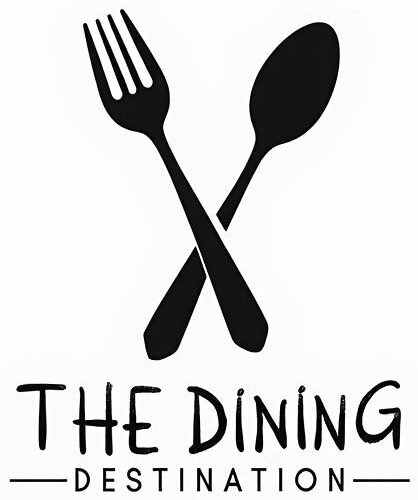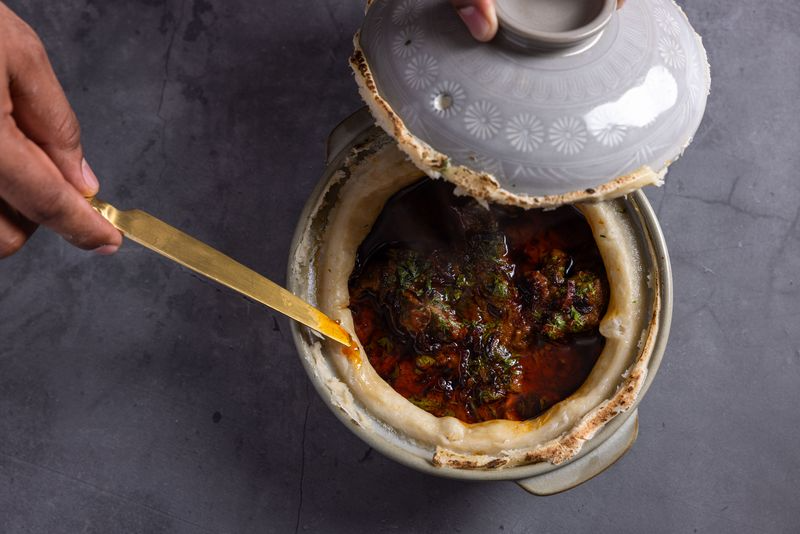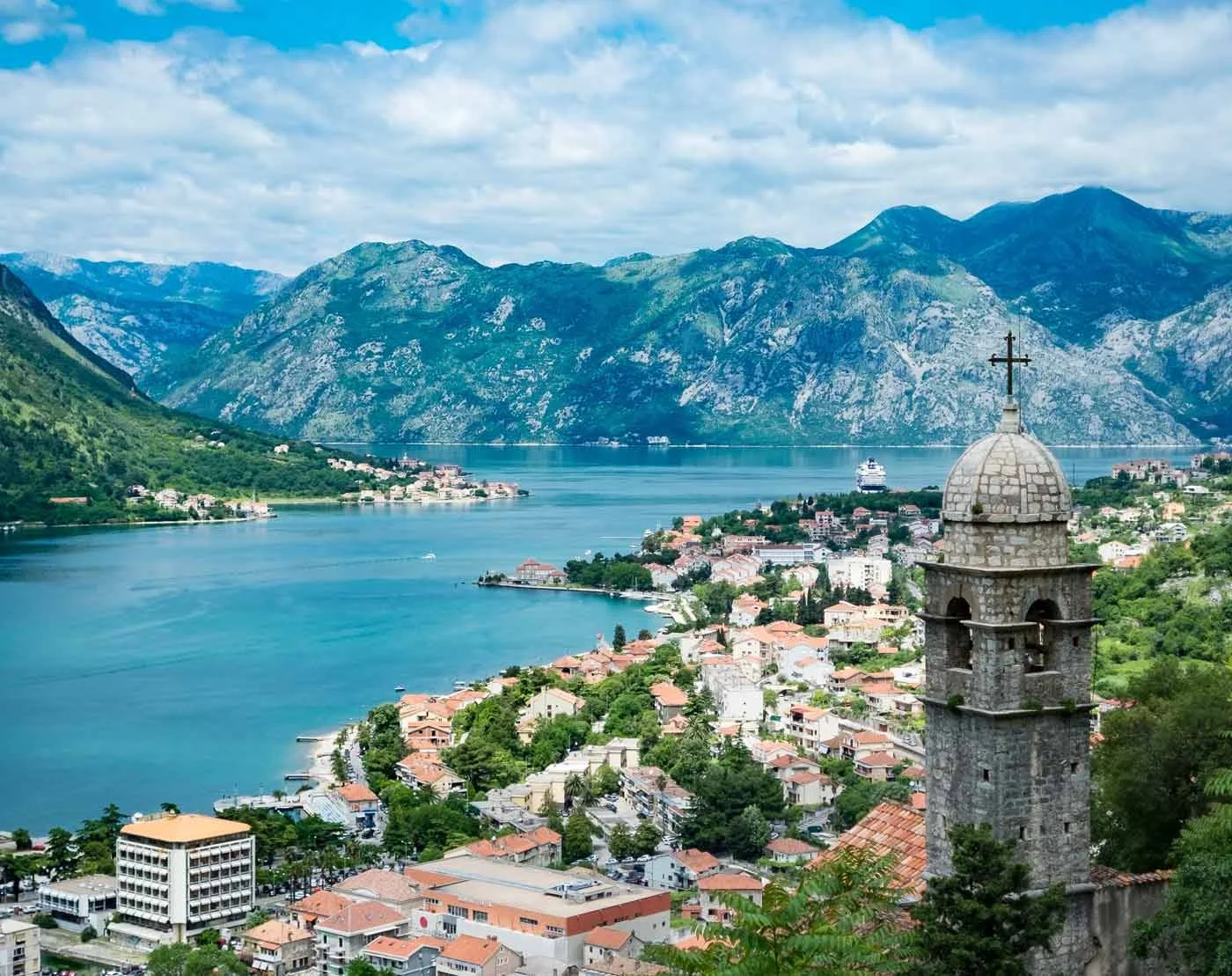Exploring the Global Culinary Landscape
World cuisine exploration is the act of finding, experiencing, and understanding the diverse culinary traditions from around the globe. It involves tasting traditional dishes, learning cooking techniques, and appreciating the cultural context behind different foods.
For those looking to begin their culinary journey around the world, here’s what you need to know:
- Definition: Food tourism or culinary tourism involves traveling to experience a place’s food and beverages
- Purpose: To understand cultural identity, history, and regional influences through food
- Activities: Food tours, cooking classes, market visits, restaurant experiences, producer visits
- Benefits: Improved cultural understanding, memorable experiences, connection with local communities
Food is often called the universal language—one that requires no translation but speaks volumes about a culture’s history, geography, and values. As food writer Ksenia Prints shares, “I just love the variety of flavors, textures, fresh herbs and vegetables of Middle Eastern cuisine. It’s what makes me feel the warmest inside!”
The beauty of world cuisine exploration lies in its accessibility. Whether you’re traversing the streets of Bangkok sampling street food, learning to make pasta from scratch in an Italian home kitchen, or simply trying a new international recipe in your own home, each experience offers a window into another world.
“Food tourism is the act of traveling for a taste of place in order to get a sense of place.” —World Food Travel Association
According to industry statistics, 53% of leisure travelers can be classified as food travelers, demonstrating how central culinary experiences have become to modern travel. More than just eating, this form of exploration creates connections, builds memories, and offers insights that go far beyond what traditional tourism might provide.
The journey of exploring world cuisines isn’t just about tasting exotic flavors—it’s about understanding the stories behind the dishes. From the spice routes that fundamentally altered European and Asian culinary practices to the cultural migrations that created fusion foods, each meal tells a tale of human history and ingenuity.

What Defines a Cuisine?
A cuisine isn’t just a random collection of recipes—it’s the delicious fingerprint of an entire culture. When you bite into a dish, you’re tasting centuries of history, geography, and human ingenuity all at once. As culinary experts often note, “Cuisines are a reflection of cultural heritage and historical migrations, blending local ingredients with global influences.”
Think about it: when different cultures face the universal question “What shall we eat?”, they create wildly different answers based on their unique circumstances.
Geographic Influences
The land itself shapes what people eat in profound ways. If you’ve ever wondered why Japanese cuisine features so much seafood while Mongolian dishes center around meat and dairy, look no further than their landscapes. Coastal communities naturally accept the bounty of the sea, while inland regions develop rich traditions around livestock, grains, and foraged ingredients.
I love how mountain communities around the world independently developed preservation techniques—from the air-dried meats of the Alps to the fermented vegetables of Korea’s highlands. These weren’t just cooking choices but survival strategies that evolved into beloved cultural treasures.
Climate and Ingredients
The weather outside your window determines what can grow in your garden, which fundamentally shapes what ends up on your plate.
In tropical Thailand, the hot, humid climate nurtures lemongrass, galangal, and chilis that give Thai food its vibrant character. Meanwhile, in the Mediterranean, the sunny, moderate climate creates the perfect conditions for olive trees, tomatoes, and fresh herbs that define Italian and Greek cooking.
Cold northern regions like Scandinavia developed cuisines around hearty root vegetables, preserved fish, and dense breads—foods that could sustain people through long, dark winters. In arid Middle Eastern regions, drought-resistant ingredients like dates, figs, and specialized livestock become culinary stars.
As food writer Shruthi Baskaran-Makanju beautifully explains about Indian cuisine: “Many people often don’t realize that there are so many sub-cuisines within the country that are wildly different! The aromatic spices, variance in textures, and the use of fresh, seasonal ingredients are some of the reasons why I love Indian cuisine.”
Cultural and Historical Context
Our beliefs, histories, and social practices flavor our food just as much as any spice. Religious traditions have created distinctive culinary paths—from kosher Jewish cooking to Hindu vegetarianism to halal Muslim traditions.
Historical events leave permanent marks on national dishes. Would Vietnamese cuisine have its remarkable baguettes and coffee culture without French colonization? Would Italian cooking exist as we know it without tomatoes from the Americas? Every cuisine tells stories of conquest, trade, and cultural exchange.
Even how we eat reveals cultural values. Middle Eastern mezze celebrates communal dining with shared plates, while formal Japanese kaiseki honors individual portions and precise presentation. Some cultures lift street food to an art form, while others save their culinary genius for elaborate feasts.
The most wonderful thing about world cuisine exploration is finding that food traditions are never frozen in time. They’re constantly evolving through innovation, migration, and cultural exchange—a living, delicious record of human history that continues to write new chapters every day.
When you start on your own world cuisine exploration journey, each dish is more than a meal—it’s a passport to understanding humanity’s most fundamental connections to the earth and to each other.
Historical Influences on World Cuisines
The story of world cuisine is essentially the story of human civilization itself, with each historical event leaving its mark on what appears on our plates. From ancient trade routes to modern globalization, our food has been shaped by centuries of human movement, exchange, and innovation.

The Revolutionary Spice Trade
Perhaps no historical force has shaped global cuisine more dramatically than the spice trade. Beginning over 4,000 years ago, this complex network of maritime and overland routes connected distant cultures through the exchange of precious flavors.
The pursuit of spices like pepper, cinnamon, nutmeg, and cloves drove European powers to establish trade routes to Asia, fundamentally altering world history. These spices weren’t just flavorings—they were status symbols, medicines, and worth their weight in gold.
When you enjoy a cinnamon roll or add pepper to your pasta, you’re participating in a tradition that once funded entire empires and sparked wars! The spice trade established vibrant port cities like Venice, Istanbul, and Malacca that became culinary melting pots where flavors and techniques merged.
One fascinating example is how chili peppers, native to the Americas, were introduced to Asia via Portuguese and Spanish traders in the 16th century. These fiery pods completely transformed the cuisines of regions like Sichuan in China, Thailand, and India—places now famous for spicy dishes that seem “traditionally” Asian but are actually the result of global exchange.
Colonization and Culinary Exchange
Colonial expansion, while fraught with exploitation and cultural devastation, also created unprecedented culinary exchanges that forever changed how we eat.
European colonizers packed their cooking techniques and ingredients when they set sail, but they also returned with new foods that revolutionized their home cuisines. The tomato, now absolutely central to Italian cooking, was initially viewed with suspicion when brought from the Americas. It wasn’t until the 18th century that it became widely accepted in Italian kitchens—a humbling reminder that what we consider “traditional” cuisine is often relatively recent.
World cuisine exploration has been happening for centuries through these colonial exchanges, creating fascinating fusion foods long before it became a culinary trend. Dishes like Anglo-Indian curry, Macanese cuisine (Chinese-Portuguese), or Peruvian Nikkei (Japanese-Peruvian) emerged organically in these cultural crossroads.
Migration and Diaspora Cuisines
Human migration—whether forced or voluntary—has continuously reshaped what we eat in profound ways.
The horrific transatlantic slave trade forcibly brought African cooking techniques and food knowledge to the Americas, influencing Southern cooking, Caribbean cuisine, and Brazilian food. Chinese railroad workers in 19th century America adapted their home recipes using local ingredients, gradually introducing Chinese flavors to American palates.
These migrations created entirely new food traditions that didn’t exist before. Cajun cuisine developed when French Canadians relocated to Louisiana, while Gullah cuisine preserved West African cooking techniques in the American South. In each case, people held onto their culinary heritage while adapting to new circumstances—creating something both familiar and entirely new.
I’m reminded of a quote from a New Orleans chef: “Food is the one thing immigrants could bring with them that customs couldn’t take away—the recipes in their heads and the flavors they remembered.”
Modern Globalization
In our interconnected world, culinary influences travel faster than ever before. What once took centuries now happens overnight.
International restaurant chains introduce global flavors to new markets, while celebrity chefs and food media popularize once-obscure cuisines. Immigrant communities establish authentic restaurants in new countries, and food technology enables worldwide distribution of previously regional ingredients.
The food delivery industry, expected to grow from $35 billion in 2018 to a staggering $365 billion by 2030, is further accelerating this global exchange by making diverse cuisines accessible from home. You can now enjoy authentic Thai curry or Mexican tacos without leaving your living room—something our ancestors could never have imagined.
This historical context shows us that world cuisine exploration isn’t just a modern trend—it’s part of a centuries-old human tradition of cultural exchange, adaptation, and culinary creativity. Every meal tells a story of human connection, and at The Dining Destination, we’re passionate about helping you find these delicious histories one bite at a time.
Major Regional Cuisines and Their Distinctive Features
Our world cuisine exploration now takes us on a mouthwatering journey across the globe, where we’ll find the distinctive culinary personalities that make each region special. Think of this as your passport to understanding how geography, climate, history, and culture have shaped what people eat around the world.
| Region | Key Ingredients | Cooking Techniques | Flavor Profiles | Signature Dishes |
|---|---|---|---|---|
| East Asian | Rice, soy, seafood | Stir-frying, steaming | Umami, balanced | Sushi, dim sum, kimchi |
| Southeast Asian | Rice, coconut, lemongrass | Grilling, simmering | Spicy, sour, aromatic | Pho, pad thai, rendang |
| South Asian | Legumes, rice, spices | Tandoor cooking, curry-making | Complex spice blends, layered | Biryani, butter chicken, dosas |
| Middle Eastern | Wheat, olive oil, lamb | Grilling, baking | Aromatic, herb-forward | Hummus, kebabs, tagine |
| Mediterranean | Olive oil, tomatoes, seafood | Grilling, braising | Fresh, herbal | Paella, pasta, moussaka |
| Northern European | Dairy, potatoes, fish | Smoking, pickling | Subtle, hearty | Smørrebrød, schnitzel, pierogi |
| Latin American | Corn, beans, chili peppers | Grilling, steaming | Bold, spicy, fresh | Tacos, ceviche, feijoada |
| African | Grains, tubers, peanuts | Slow cooking, stewing | Spicy, savory | Jollof rice, injera with wat, tagine |
| Caribbean | Seafood, tropical fruits, rice | Grilling, stewing | Spicy, fruity | Jerk chicken, rice and peas, ackee and saltfish |
Asian Cuisine: A World Cuisine Exploration into Flavors of the East
Asian cuisine is like a beautiful mix with countless threads – each country and region contributing its own unique patterns and colors to the whole. From the delicate, subtle flavors of Japan to the fiery heat of Sichuan, this vast continent offers an endless feast for curious food explorers.
In East Asia, rice isn’t just food – it’s the foundation of entire food cultures. In Japan, perfectly cooked short-grain rice serves as the canvas for meals, while in China, regional varieties suit different dishes. The magic of East Asian cooking often comes from soy-based ingredients that deliver that satisfying umami punch – think of the deep complexity of soy sauce, the fermented richness of miso, or the earthy depth of doenjang paste in Korean cooking.
Japanese cuisine celebrates the art of simplicity, where the goal is to improve, not mask, natural flavors. Here, seasonal ingredients shine in dishes that are as beautiful to look at as they are delicious to eat. Across the sea in Korea, fermentation transforms ordinary vegetables into extraordinary treasures – most famously kimchi, which appears at practically every meal, lending its tangy, spicy kick to everything it touches.
Chinese cuisine defies simple description because it’s actually eight major regional cuisines under one banner. A Cantonese seafood feast in Guangzhou bears little resemblance to the numbing spice of Sichuan hot pot or the hearty wheat noodles of northern China. As the Chinese saying goes, “In the south, sweet; in the north, salty; in the east, spicy; in the west, sour” – a testament to the country’s incredible culinary diversity.
Moving to Southeast Asia, the tropical climate has blessed this region with an abundance of vibrant ingredients. Here, food is a symphony where sweet, sour, salty, and spicy notes play together in perfect harmony. Fragrant herbs like lemongrass, Thai basil, and cilantro perfume the air when cooking begins, while coconut milk adds creamy richness to curries and desserts alike.
Thai cuisine exemplifies this balance beautifully – a single dish like tom yum soup hits every taste bud simultaneously, creating an explosion of flavor that’s greater than the sum of its parts. Vietnamese cooking takes a lighter approach, where fresh herbs and vegetables take center stage in dishes like pho (aromatic beef noodle soup) and fresh spring rolls. The influences of colonial history are evident too – like the crusty French baguettes that became the foundation for banh mi sandwiches.
Island nations like Indonesia and Malaysia showcase the influence of centuries of trade, with spice blends that reflect Arab, Indian, and Chinese connections. A slow-cooked rendang curry from Indonesia or a complex nasi goreng fried rice demonstrates how these cultures have mastered the art of building deep, satisfying flavors.
In South Asia, spice is an art form. Indian cuisine alone represents one of the world’s most sophisticated culinary systems, where spices aren’t just tossed in for heat but carefully selected and combined to create precise flavor profiles. The diversity within the subcontinent is staggering – from the yogurt-marinated tandoori dishes of the north to the coconut-infused curries of Kerala in the south.
What many outsiders don’t realize is that Indian cuisine isn’t one thing but dozens of distinct regional traditions. The buttery richness of Punjabi cuisine bears little resemblance to the seafood-centric dishes of coastal Goa or the vegetarian specialties of Gujarat. What unites them is a deep understanding of spice and an ability to create layers of flavor that unfold with each bite.
European Cuisine: A World Cuisine Exploration into Culinary Traditions
European cuisine has perhaps influenced global cooking more than any other regional tradition, spreading its techniques and flavors worldwide through centuries of exploration, trade, and colonization.
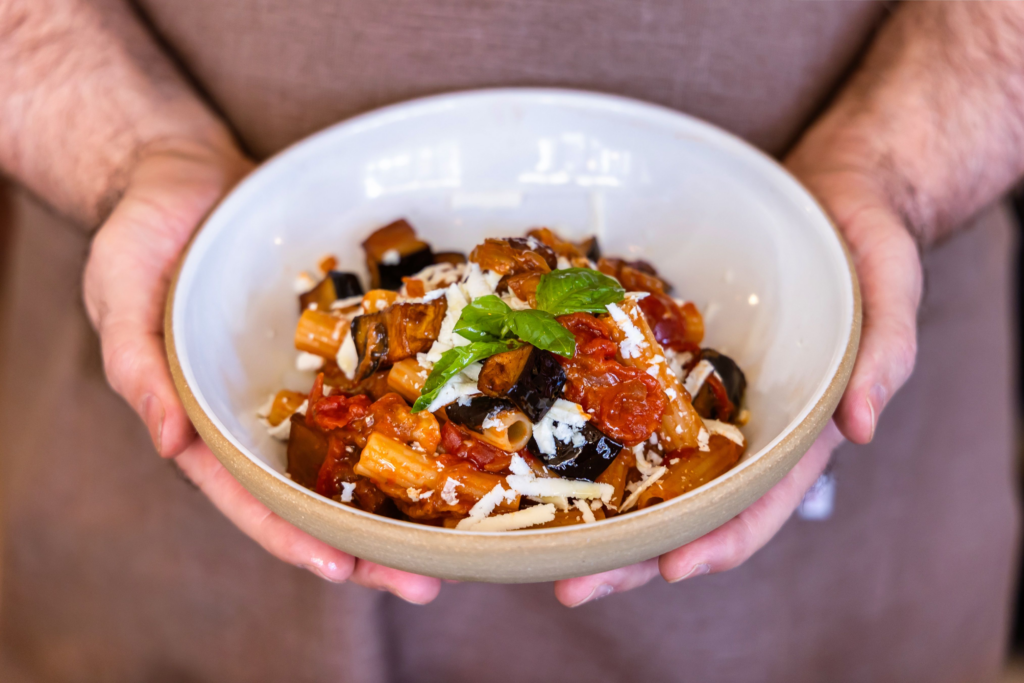
The Mediterranean region basks in sunshine, and its cuisine reflects this brightness. Olive oil – liquid gold – forms the foundation of cooking across Italy, Greece, Spain, and southern France. Fresh vegetables burst with flavor thanks to the favorable climate, while the azure Mediterranean Sea provides an abundance of seafood.
Italian food has conquered American hearts, with 61% of Americans saying they eat it regularly – and it’s easy to understand why. From hand-rolled pasta in Emilia-Romagna to the seafood treasures of Sicily’s coastline, Italian cooking celebrates regional ingredients with a simplicity that lets quality shine through. A perfectly ripe tomato, just-pressed olive oil, and fresh basil need little else to create magic on a plate.
Spanish cuisine dances between rustic tradition and avant-garde innovation. One moment you’re enjoying simple pan con tomate (bread rubbed with tomato and olive oil), the next you’re marveling at the molecular gastronomy that transformed Spanish chefs into global culinary stars. The convivial tradition of tapas – small plates shared among friends – perfectly captures the Spanish approach to dining as a social celebration.
Moving northward, Northern European cuisine responds to a harsher climate with hearty, satisfying dishes designed to fortify against long winters. Here, preservation techniques become an art form – smoking fish in Scandinavia, fermenting cabbage into sauerkraut in Germany, or pickling practically everything in Eastern Europe.
Swedish meatballs with tart lingonberry sauce exemplify the northern European love of contrasting flavors, while Russian borscht demonstrates how humble ingredients like beets can be transformed into something deeply satisfying. Potatoes – a relatively recent addition to European cooking – have become central to northern cuisines, appearing as German potato salad, Polish pierogi, or Norwegian lefse flatbread.
What’s fascinating about northern European cuisine is how it accepts nature’s bounty even in challenging conditions. Foraging traditions remain strong, with wild mushrooms, berries, and herbs making their way from forest to table. The new Nordic cuisine movement has revitalized these traditions, elevating humble ingredients through modern techniques.
Western European cuisine, particularly French, has historically set the standard for culinary sophistication worldwide. With over 600 Michelin-starred restaurants, France continues to be a global culinary powerhouse. The French codified cooking techniques that now form the backbone of professional kitchens everywhere – from the perfect omelet to the five mother sauces that launch countless culinary creations.
British food, long the subject of unfair jokes, actually offers comforting classics like Sunday roasts and savory pies that reflect its agricultural heritage. Belgian cuisine may be small in geographic scope but looms large in influence, giving the world superior chocolates, crisp frites, and hundreds of unique beer styles that pair perfectly with local specialties.
Our world cuisine exploration reveals that European cooking traditions have been both influenced by and influential upon global cuisines. The Columbian Exchange brought tomatoes, potatoes, and peppers from the Americas, forever changing European cooking. In turn, European techniques spread worldwide through colonization and migration, creating fascinating fusion cuisines everywhere from New Orleans to Macau.
What makes European cuisine so compelling is how it demonstrates that “traditional” food is always evolving. The tomato sauce that seems quintessentially Italian today was impossible before the 16th century, while the potato that defines so many northern European dishes was once viewed with suspicion as a poisonous exotic plant. It’s a reminder that cuisine is never static but constantly evolving through cultural exchange.
The Fusion Revolution: When Cultures Mix on a Plate
The 21st century has ushered in what might be the most thrilling chapter in our world cuisine exploration journey: the fusion revolution. It’s like watching culinary magic unfold before our eyes—cultures meeting, mingling, and creating entirely new food traditions that didn’t exist just decades ago.
“Fusion cuisine has created a blend of global flavors that represents our increasingly interconnected world, where culinary traditions no longer exist in isolation but continually inspire and transform each other.”
The Rise of Fusion Cuisine
Remember the first time you tried a Korean taco? That moment of surprise when the spicy kimchi complemented the traditional Mexican flavors perfectly? That’s fusion cuisine at its finest—deliberately combining elements from different culinary traditions to create something innovative and exciting.
While culinary fusion has actually happened naturally throughout history (think Portuguese sailors influencing Japanese tempura), modern fusion is often a conscious creative choice. Today’s chefs are like culinary artists, painting with flavors from around the world on a single plate.
Some fusion pairings have become wildly popular, like Korean-Mexican dishes such as kimchi tacos and bulgogi burritos that combine the fermented kick of Korean cuisine with the familiar comfort of Mexican street food. Japanese-Peruvian (or Nikkei) cuisine beautifully marries delicate Japanese techniques with vibrant Peruvian ingredients, while French-Vietnamese cooking showcases refined European methods applied to aromatic Southeast Asian flavors.
What’s fascinating is how some fusion creations have become so mainstream that we barely recognize them as fusion anymore. The California roll—that sushi staple with avocado and crab—was once considered radical, but is now just “sushi” to most Americans. Similarly, Tex-Mex cuisine has become so embedded in American food culture that many don’t realize it represents the blending of two distinct culinary traditions.
Globalization and Culinary Cross-Pollination
Several factors have turned our world into one giant, delicious melting pot:
First, global migration has brought talented chefs to new shores, where they’ve adapted their homeland techniques to local ingredients. The chef making authentic Thai food in rural Iowa might incorporate local corn or heartland beef, creating something uniquely Thai-American in the process.
International travel has exploded too, with food enthusiasts and chefs eagerly seeking authentic experiences abroad. They return home inspired, with new techniques and flavor combinations dancing in their heads.
Social media has perhaps been the biggest accelerator—a chef in Tokyo can post a new creation at breakfast, and by dinner, restaurants in New York and London are experimenting with their own versions. Food trends now spread across borders at the speed of Instagram and TikTok.
The availability of ingredients has transformed as well. Ingredients that once required a special trip to an ethnic market—lemongrass, kimchi, harissa—now sit on mainstream supermarket shelves, inviting home cooks to experiment across cultural lines.
Finally, multicultural urban centers like New York (where The Dining Destination is based) have become natural laboratories for fusion cuisine. With diverse populations living side by side, chefs respond to the demand for innovative dining that reflects this cultural intermingling.
As one chef shared during our research: “When I eat at restaurants, sometimes I ask how a particular dish was made… I’ve been invited into the kitchen to learn/watch how it’s done.” This curiosity—this openness to learning across cultural boundaries—is the engine driving culinary innovation today.
When Fusion Works (And When It Doesn’t)
Not all fusion attempts hit the mark. The best fusion cuisine respects its source traditions while creating something genuinely new—like a conversation between cultures rather than a random mash-up.
Successful fusion understands the fundamental principles of both cuisines it’s drawing from. It combines techniques and flavors that complement each other, creating harmony rather than confusion. And importantly, it acknowledges its inspirations respectfully, without resorting to culinary stereotypes.
Unsuccessful fusion, on the other hand, often throws together elements without understanding their context. The result can be jarring flavor combinations that feel forced rather than natural. At worst, it can veer into appropriation, marketing itself as “exotic” in ways that reduce rich culinary traditions to trendy gimmicks.
In New York City, we see the entire spectrum—from thoughtful, chef-driven fusion concepts to trendy spots jumping on whatever bandwagon is passing by. The difference is usually evident from the first bite.
The Home Kitchen as a Fusion Laboratory
The beauty of today’s fusion revolution is that you don’t need a culinary degree to participate. Home cooks everywhere are becoming culinary experimenters, blending techniques and flavors from their various cultural influences or travels.
Maybe you’ve tried drizzling Mexican mole sauce over stir-fried vegetables, or adding Mediterranean herbs to an Indian curry. Perhaps you’ve finded how kimchi adds incredible depth to Western sandwiches or pasta dishes. Or you might have filled traditional dumplings with non-traditional ingredients based on what’s in your refrigerator.
This playful experimentation represents world cuisine exploration at its most accessible and personal. It’s about taking the lessons of global cooking traditions and making them your own—creating dishes that tell your unique culinary story.
In many ways, fusion cooking in our homes reflects who we are becoming as a global society—more connected, more curious, and more willing to look beyond borders for inspiration and joy. And isn’t that what food has always been about?
Starting on Your World Cuisine Exploration
Now that we’ve explored the rich mix of global cuisines, you might be wondering: “How do I begin my own world cuisine exploration journey?” Whether you’re an adventurous eater, a curious cook, or a potential food tourist, there are countless ways to dive into this delicious trip.
Becoming a Culinary Explorer at Home
The most accessible way to begin your journey is right in your own kitchen. You don’t need a passport to travel the world through food—just an open mind and a functioning stove!
The beauty of home-based world cuisine exploration is that you can take it at your own pace. As one home cook shared with us: “There’s no need to jump into making many different world cuisines simultaneously; starting small is fine.” This wisdom is spot on. Rather than attempting to master everything at once, focus on exploring one culinary tradition deeply.
Your pantry is the first place to start changing. Each cuisine has its foundation ingredients that appear in many dishes. For Indian cooking, you might invest in garam masala, turmeric, cumin, and cardamom. Thai cuisine comes alive with fish sauce, coconut milk, lemongrass, and Thai basil. Mexican dishes often rely on dried chilies, masa harina, and tomatillos. Italian cooking shines with quality olive oil, real Parmigiano-Reggiano, and fresh basil.
Beyond ingredients, understanding fundamental techniques often proves more valuable than memorizing recipes. Learning how to properly stir-fry is key to Chinese cuisine, while building a curry from scratch open ups Indian cooking. The gentle art of fresh pasta making transforms Italian meals, and properly prepared rice forms the foundation of Japanese dining.
Finding reliable resources is crucial for authentic learning. “Cookbooks are one option, I also try to look for blogs or YouTube channels run by people who are from the countries I want to learn from,” one enthusiast told us. Your local library likely has cookbooks by native authors, while YouTube offers countless channels focused on authentic techniques. Food blogs written by cooks with deep cultural connections provide both recipes and context, and online cooking classes can guide you through unfamiliar processes step by step.
From Dining Room to Destination: Food Tourism
When you’re ready to take your world cuisine exploration beyond the kitchen, food tourism offers immersive experiences that engage all your senses.
Before booking international flights, though, explore the global cuisines available in your own city. Most urban areas have ethnic neighborhoods worth visiting, markets filled with ingredients you won’t find in regular supermarkets, and restaurants run by first-generation immigrants serving authentic dishes. Cultural festivals often feature traditional foods, and many communities offer cooking classes focused on international cuisines.
When you do travel, structured food experiences can provide deeper insights than simply dining out. Food tours led by knowledgeable locals reveal hidden gems and neighborhood favorites. Cooking classes in traditional settings teach techniques you can’t learn from books. Market tours with chefs or food historians help you understand unfamiliar ingredients, while farm or producer visits connect you to the source of regional specialties.
For more independent explorers, doing your homework pays off. Research regional specialties before traveling so you know what to look for. Ask locals—not hotel concierges—for their favorite spots. Visit morning markets where residents shop, and brave the street food stalls where you see crowds of locals gathering.
The food delivery industry’s explosive growth—projected to reach $365 billion by 2030—means you can even sample international cuisines from home while planning your next culinary trip. Consider it research for future travels!
Overcoming Culinary Culture Shock
Let’s be honest—exploring new cuisines sometimes means encountering unfamiliar ingredients, techniques, or flavors that might initially seem challenging. That’s part of the trip!
If you’re feeling hesitant, start with gateway dishes—more accessible options before diving into more adventurous fare. Try butter chicken before moving to more complex Indian curries. Sample California rolls before exploring sashimi. Begin with pad thai before tackling more pungent Thai dishes.
Understanding the context behind unfamiliar elements can transform your experience. Fish sauce might seem strange until you realize it provides that essential umami depth to Southeast Asian dishes. Korean fermentation techniques developed as practical preservation methods before refrigeration. Spicy food in tropical regions actually helps cool the body through perspiration—culinary wisdom passed through generations.
Authentic doesn’t always mean rigid—cuisines have always adapted to local preferences and available ingredients. Feel free to reduce chilies if you’re sensitive to heat, substitute more familiar herbs if you can’t find traditional ones, or adapt cooking methods to equipment you have available. The culinary police won’t come knocking!
At The Dining Destination, we believe that world cuisine exploration should be an trip, not a test. The goal isn’t perfect authenticity but rather understanding and appreciation of diverse culinary traditions.
Tips for Your Own World Cuisine Exploration
Documenting your experiences creates a personal culinary journal you’ll treasure. Keep notes or photos of new dishes you try, recording what you enjoyed and what you’d like to explore further. These records become both a memory book and a roadmap for future explorations.
Online communities offer support and inspiration when you’re venturing into unfamiliar culinary territory. From Reddit’s cooking forums to Instagram hashtag communities, you’ll find fellow travelers happy to answer questions or celebrate your successes.
Cultural respect forms the foundation of meaningful exploration. Approach new cuisines with curiosity rather than judgment. Avoid describing unfamiliar foods as “weird” or “exotic”—these terms center your experience rather than honoring the tradition you’re exploring.
Accept imperfection as part of the journey. Your first attempts at new dishes won’t match your favorite restaurant’s version, and that’s perfectly fine! Each attempt teaches you something valuable about techniques, flavors, and ingredients.
Sharing with others multiplies the joy of findy. Cooking for friends and family spreads cultural appreciation and gives you valuable feedback on your culinary experiments. Food has always been about community, after all.
As one passionate food explorer told us, “Food is more than just nourishment and a universally shared experience. Why not take a culinary world tour and taste different cuisines?” This spirit of trip and connection is at the heart of meaningful world cuisine exploration.
For more inspiration, check out our guides on How Food Tourism is Changing the Way We Travel and explore our section on Travel for Food.
Frequently Asked Questions about World Cuisine Exploration
What defines a cuisine and how is it influenced by culture and geography?
Have you ever wondered what makes Italian food distinctly Italian, or Japanese cuisine unmistakably Japanese? A cuisine isn’t just a collection of recipes—it’s the culinary fingerprint of a culture, shaped by countless influences over centuries.
A cuisine develops from the unique combination of where people live, what grows there, their history, and their cultural values. Coastal communities naturally accept seafood in their daily cooking, while those living inland might center their diet around grains, vegetables, and livestock. The climate plays a huge role too—tropical regions burst with exotic fruits and spices, while colder areas develop clever preservation techniques to survive harsh winters.
Available ingredients form the foundation of any cuisine. Before global trade became commonplace, people cooked with what was locally available or what could be preserved. This is why rice dominates in Asia, corn in Central America, and wheat in Europe. As one culinary historian noted, “Cuisines are a reflection of cultural heritage and historical migrations, blending local ingredients with global influences.”
Cultural practices—including religious beliefs, social customs, and historical events—deeply influence what and how people eat. Consider how Kosher laws shape Jewish cuisine, or how Buddhism’s emphasis on vegetarianism influences cooking across parts of Asia. Even family traditions and celebratory meals become defining elements of a cuisine over time.
This explains why Italian food varies dramatically from north to south (with butter dominating northern cooking and olive oil in the south), or why Japanese and Chinese cuisines differ so profoundly despite their geographic proximity.
How has globalization affected traditional cuisines?
Our interconnected world has transformed cooking traditions in ways both exciting and concerning. World cuisine exploration has never been easier, but this accessibility comes with interesting trade-offs.
On the positive side, ingredients once considered exotic now line supermarket shelves everywhere. A home cook in Minnesota can easily prepare an authentic Thai curry, while a chef in Tokyo might experiment with Mexican chilies. Diaspora communities bring their culinary traditions to new homes, preserving cultural heritage through food. Meanwhile, innovative chefs blend techniques and flavors to create exciting fusion cuisines that wouldn’t have been possible before our globalized world.
The sharing of culinary knowledge has exploded through social media, cooking shows, and international travel. A recipe that might have once been passed down only through generations of a family can now reach millions of eager cooks worldwide.
However, globalization presents challenges too. Local variations sometimes get lost as commercialized versions dominate—think of how “Chinese food” in America bears little resemblance to the diverse regional cuisines of China. Authentic ingredients often get substituted with more accessible alternatives, subtly altering traditional flavors. Fast food culture sometimes threatens slow cooking methods that have defined cuisines for centuries.
The booming food delivery industry illustrates this change. Expected to grow from $35 billion in 2018 to an astounding $365 billion by 2030, this technology makes diverse cuisines accessible without leaving home—but sometimes at the cost of the full cultural experience.
Mexican cuisine offers a fascinating example of these dynamics. It ranks as the third most popular restaurant type in America, accounting for nearly 9% of all restaurants. Yet what Americans recognize as “Mexican food” often differs significantly from Mexico’s diverse regional cuisines. Is this evolution or dilution? The answer probably depends on who you ask.
How can individuals learn to cook and appreciate different cuisines from around the world?
Ready to start on your own world cuisine exploration journey? There’s never been a better time to expand your culinary horizons, whether you’re a curious beginner or an experienced cook looking to master new traditions.
Start by gathering thoughtful resources. Seek out cookbooks written by authors with deep connections to the cuisine—they’ll offer not just recipes but cultural context too. YouTube channels and blogs run by people from the culture provide invaluable visual guidance that text alone can’t convey. Online cooking classes have exploded in popularity, offering interactive experiences where you can ask questions in real-time.
Building relationships with cultural experts takes your learning to another level. When appropriate, chat with chefs at ethnic restaurants about their techniques. Shop at specialty markets and strike up conversations with the owners, who are often passionate about sharing their food knowledge. Join online communities dedicated to specific cuisines where enthusiasts and experts gather to exchange tips.
Rather than trying to master everything at once, focus on learning foundational techniques. Understanding how to properly stir-fry is more valuable than memorizing a dozen Chinese recipes. Learn how various cultures approach seasoning—the building blocks of flavor that make each cuisine distinctive. Practice making staple components like stocks, sauces, and spice blends that form the backbone of any cooking tradition.
“When I eat at restaurants, sometimes I ask how a particular dish was made,” shared one passionate food explorer in our research. “I’ve been invited into the kitchen to learn and watch how it’s done.” This curiosity and willingness to engage directly with culinary experts can lead to invaluable learning experiences.
Take a systematic approach to your learning journey. Focus on one cuisine at a time rather than jumping between traditions. Begin with simpler dishes before attempting complex recipes. Build a pantry of essential ingredients gradually to avoid waste and overwhelm. Most importantly, practice techniques repeatedly until they become second nature.
For those concerned about authenticity, cuisines are living traditions that have always evolved. The goal isn’t perfect replication but rather understanding the principles and spirit behind different culinary approaches. Even within countries, recipes vary from region to region and family to family—there is rarely one “authentic” version of any dish.
Through The Dining Destination’s resources and community, we aim to make world cuisine exploration accessible to everyone, regardless of their starting point or available resources. The joy of finding new flavors and techniques is a journey that never truly ends—and that’s what makes it so delicious.
Conclusion
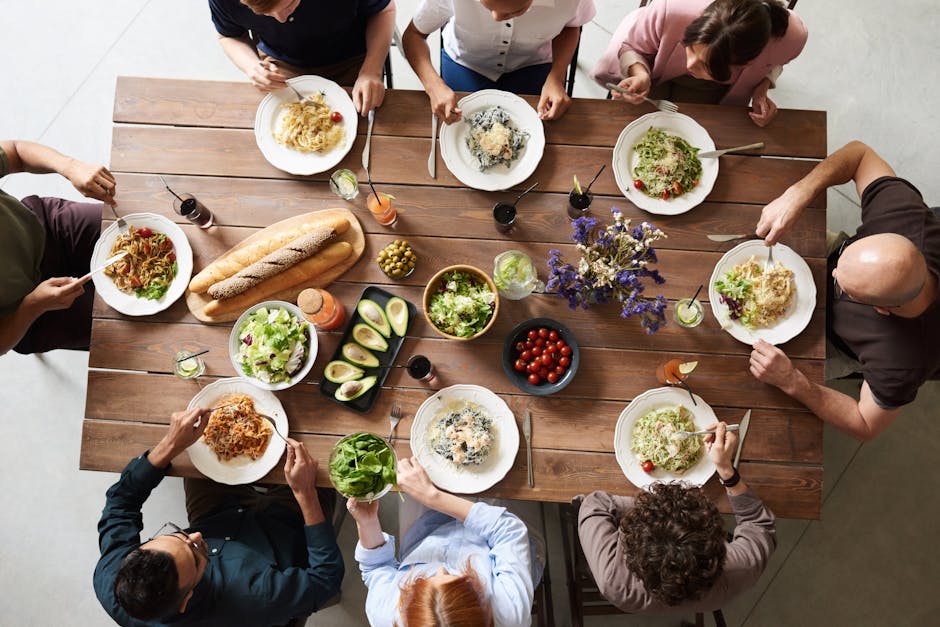
Our journey through world cuisine exploration has been nothing short of remarkable – a vibrant mix of flavors, traditions, and stories that span the globe. From the aromatic spice markets of Marrakech to the busy street food stalls of Bangkok, food connects us in ways that transcend language and borders.
Food isn’t just sustenance; it’s a living museum of human ingenuity and adaptation. When you savor the complex spices in an Indian curry or appreciate the delicate balance of a French sauce, you’re experiencing centuries of culinary wisdom passed down through generations. Each bite tells a story of climate, geography, migration, and cultural values.
The beauty of exploring global cuisines lies in its accessibility. You don’t need a passport or expensive equipment – just an open mind and willing taste buds. Whether you’re cooking a Thai curry in your apartment kitchen or finally trying that Korean barbecue restaurant in your neighborhood, you’re participating in a form of cultural exchange as old as humanity itself.
Through our world cuisine exploration, we’ve finded that food offers us multiple gifts. It provides a window into understanding different cultures and histories. It expands our personal horizons, introducing new flavors and techniques that might become favorites. It creates opportunities for connection – some of life’s most meaningful conversations happen around dinner tables where diverse dishes are shared.
The skills we gain through culinary exploration transfer across kitchens. Learning how Japanese chefs achieve umami can improve your Italian pasta sauce. Understanding Mexican chile applications might transform your approach to heat in any dish. The confidence gained from mastering one international recipe builds the foundation for trying others.
At The Dining Destination, we believe food tourism represents one of life’s greatest pleasures. As the World Food Travel Association so beautifully puts it, it’s “the act of traveling for a taste of place in order to get a sense of place.” When you seek out authentic local cuisine, whether abroad or in your own city, you’re experiencing a culture through its most accessible and joyful expression.
This exploration isn’t about perfect authenticity or culinary purity – cuisines have always evolved through exchange and adaptation. It’s about approaching food with curiosity, respect, and a sense of trip. It’s about recognizing that behind every recipe is a human story worth knowing.
We hope this guide has inspired your own culinary journey. Perhaps you’ll finally attempt that challenging international recipe, seek out a restaurant serving cuisine you’ve never tried, or even plan your next vacation around food experiences. Whatever path you choose, every meal is an opportunity for findy.
As you continue your world cuisine exploration, we invite you to share your experiences with our community. The joy of food is multiplied when shared, and your findies might inspire fellow travelers on their own culinary journeys.
For more inspiration and guidance on culinary trips around the world, explore our section on Travel for Food. The global table is set, and you’re always welcome.
